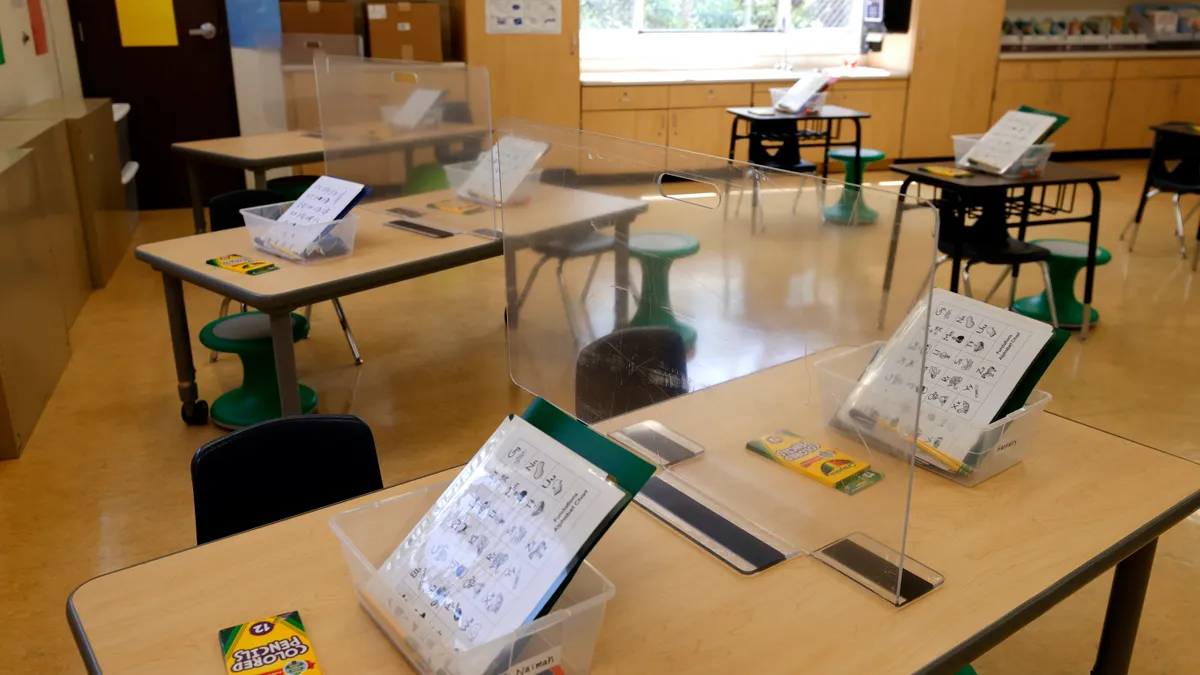Dive Brief:
-
Special education students had larger summer learning losses in K-4 compared to students who never had special education services, according to a new study conducted by NWEA that is believed to be the first analysis of seasonal learning patterns for students with disabilities.
-
During some of the school years studied between 2014-19, however, students in special education grew more in math and reading achievement than their peers. These findings may help dispel concerns that special education students cannot make significant progress over one school year, said Elizabeth Barker, an accessibility research manager at NWEA and co-author of the report.
- Schools can support children’s academic progress by increasing summer learning experiences for students with disabilities and adopting a universal multi-tiered system of supports for all students, according to recommendations from NWEA and the National Center for Learning Disabilities.
Dive Insight:
Barker and Angela Johnson, an NWEA research scientist, used five years of reading and math MAP Growth assessment results (collected over the 2014-15 through 2018-19 school years) from a cohort of 4,228 students in 109 public schools that voluntarily participated in administering the assessments and sharing results and student demographics, such as special education status, with NWEA researchers.
By analyzing performance results from spring testing and fall testing, the researchers could conclude there were steeper summer learning losses for students who, at the time of testing or previously, had received Individuals with Disabilities Education Act services compared to students who had never had special education intervention.
Knowing that information can help schools determine if they need to provide more summertime academic programs for students, Johnson said, likening that knowledge to how a track coach may study patterns for maximizing runners’ performances.
“If we identify that students are running really, really fast during the [school] year but they're losing a little bit of distance over the summer, that's a point of intervention that is really important to identify,” Johnson said. “That's what we were able to do in this study is to figure out that summer is really the time when students need a lot more support than they currently have.”
Another study cited in the NWEA report says only 8% of students with disabilities receive extended school year services through their individualized education program, although school districts may have additional summer learning opportunities available for all students. States and districts may have various approaches and criteria for ESY participation but generally, it is an underutilized intervention, Barker said.
"That's an area that we can really consider supporting more students with disabilities than what's happening, I feel, today,” Barker said.
NCLD’s recommendations emphasize how state and local school systems can make academic, social and emotional, and culturally responsive improvements by using COVID-19 stimulus funding, including $3 billion dedicated solely to special education. The funds “can be transformative for students with disabilities and other students who have been most impacted by the pandemic,” NCLD’s recommendations said.
NWEA and NCLD, along with the Alliance for Excellent Education and Future Ready Schools, will host a webinar to discuss the study findings and recommendations on June 8, 2-3 p.m. EDT.











